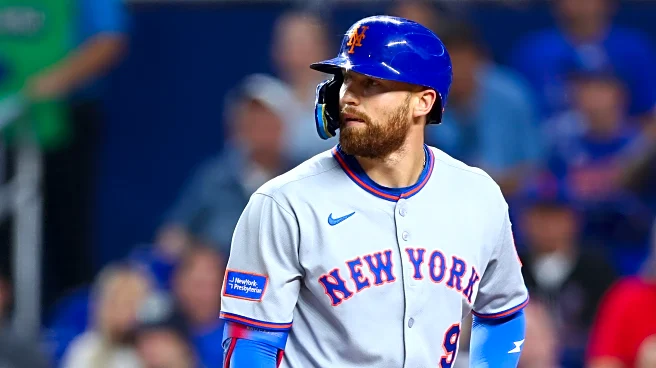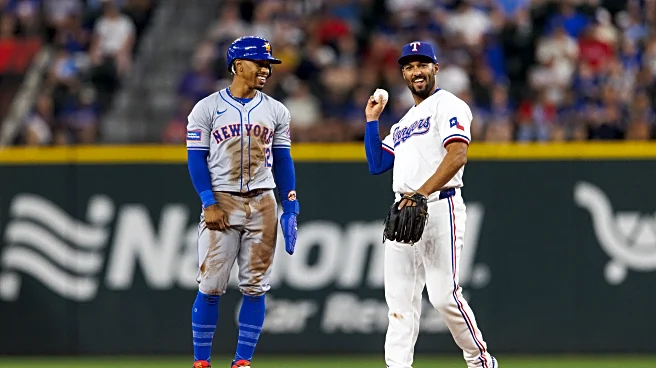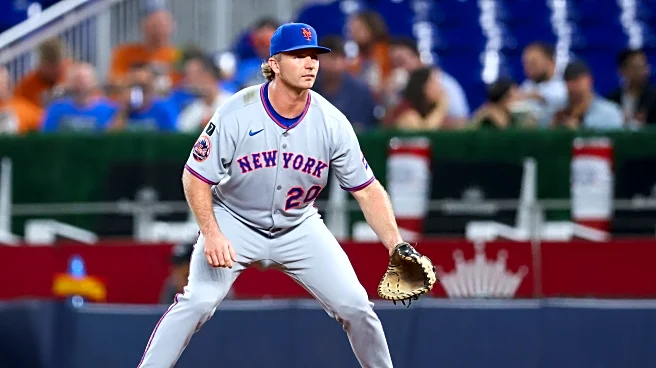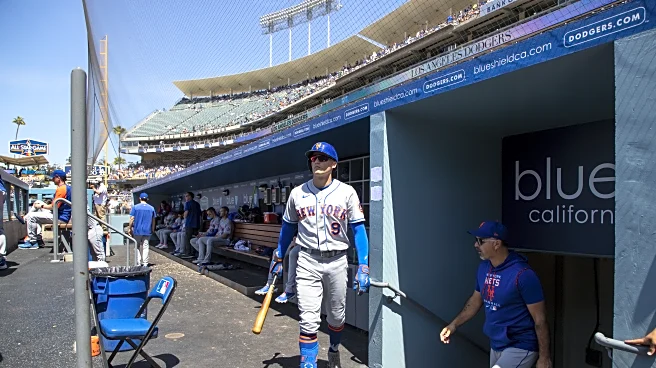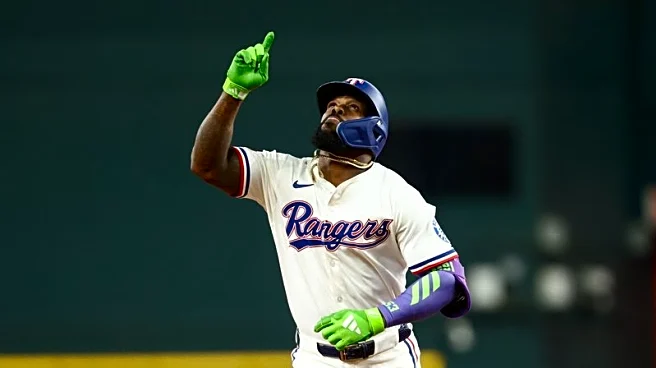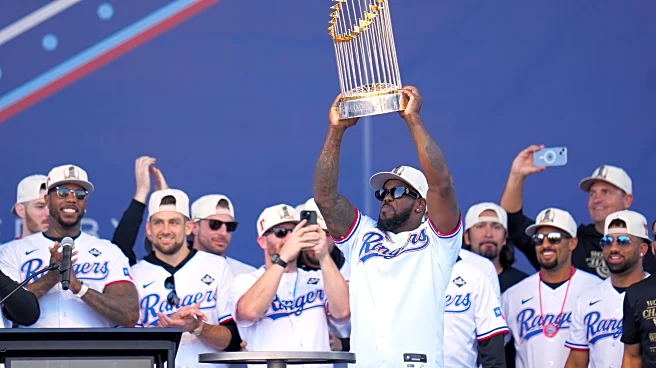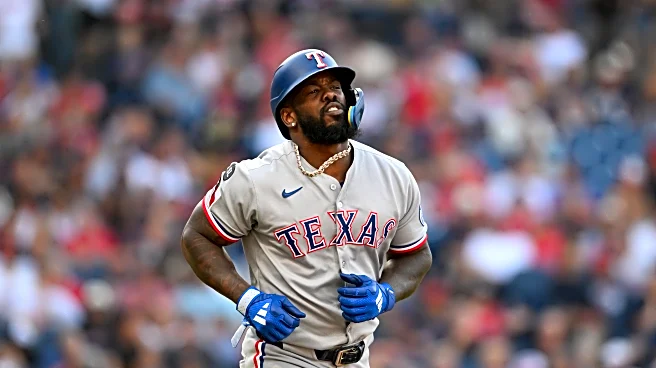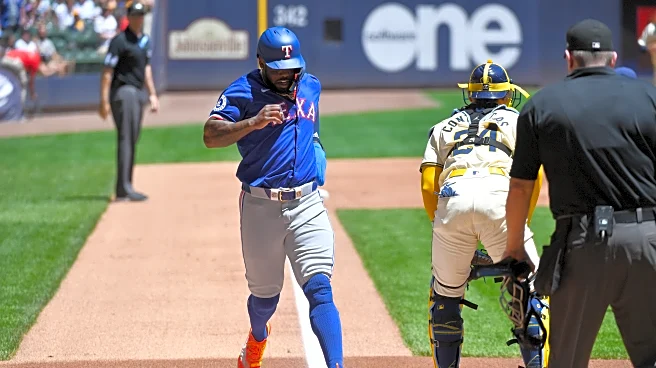No one is going to be accusing Chris Young of being overly sentimental now, are they?
In a span of a little over 48 hours, four of the key players from the Rangers’ magical 2023 World Series team were moved
on from. Adolis Garcia, Jonah Heim and Josh Sborz were non-tendered on Friday, and while we were still coming to grips with those moves, the news broke Sunday night that Marcus Semien was being sent to New York for Brandon Nimmo.
12 position players had plate appearances in the World Series for the Rangers. Only three — Corey Seager, Evan Carter, and Josh Jung — still are on the roster. Cody Bradford and Nathan Eovaldi are the only pitchers who appeared in the World Series who are still here.
Its a whole new Rangers team we have right now.
From a roster construction standpoint, one can see how this move made sense for Texas. The team needed a starting corner outfielder, what with Adolis Garcia being non-tendered, and had a number of infielders. This move gives the Rangers the corner outfielder they needed, while opening up a hole at second base that could be filled internally.
Let’s look at what a Rangers 26 man roster looks like now:
C — Kyle Higashioka/CatcherTBNL
1B — Jake Burger
2B — Josh Smith/Ezequiel Duran
3B — Josh Jung
SS — Corey Seager
LF — Brandon Nimmo
CF — Evan Carter
RF — Wyatt Langford
DH — Joc Pederson
Bench — (Higashioka/CTBNL), (Smith/Duran), Sam Haggerty, Someone Else
SP1 — Jacob deGrom
SP2 — Nathan Eovaldi
SP3 — Jack Leiter
SP4 — Kumar Rocker
SP5 — Jacob Latz
Bullpen — Robert Garcia, Cole Winn…um…
There’s obviously issues here. The Rangers need at least one starting pitching, preferably one of the innings-eating variety. The bullpen is going to have to be rebuilt almost completely once again.
But there’s a lineup here to work with, at least. The Rangers still need to go get a catcher — preferably one who can be counted on to start 90-100 games, given Higashioka’s age, durability issues, and history of handling less than 50% of the catching workload. They could use a solid righthanded bat for the final spot on the bench.
But most of the pieces are in place, and the focus — and money — will now be spent shoring up the pitching staff over the course of the offseason.
One would feel a little more confident in this addition, of course, if the Rangers were getting 2022 or 2023 Brandon Nimmo. The Mets signed Nimmo to an eight year, $162 million deal after a 2022 season that saw him put up a 5.0 bWAR while slashing .274/.367/.433 and being the team’s everyday center fielder. It was only the second time in his career that Nimmo had accumulated 400 plate appearances in a season — his previous season high was 535 plate appearances — but it was indicative of what Nimmo was capable of when he could stay on the field.
Nimmo has, to his credit, stayed on the field in the three seasons since signing that deal, appearing in 458 games over the past three seasons. He has also, however, declined both offensively and defensively, putting up a 110 OPS+ over the past two seasons, and moving to left field defensively, where he was more or less average in 2025.
Nimmo is younger than Semien — he will be 33 at the start of the 2026 season, whereas Semien will be 35 — so he has that going for him. He’s also a little less expensive per year than Semien, at $20.25 million per year, whereas Semien is at $26 million in 2026 and 2027 and then $20 million in 2028. Of course, he’s also got two more years remaining on his deal, so he’s owed $101.25 million over the next five years, compared to $72 million over the next three years for Semien, and the reported $5 million that the Mets are sending in this deal doesn’t come close to making up the difference.
The extra two years probably wouldn’t be so worrisome if there weren’t red flags with Nimmo’s underlying metrics. Drawing walks has been a strength of Nimmo’s throughout his career, but his walk rate dropped precipitously in 2025, from a career mark of 12.0%, and a 2024 11.6% rate, to a below-average 7.7% rate in 2025. Nimmo’s sprint speed dropped from being around the top one-third the previous two years to a shade below average in 2025, and his range fell off, as well. Nimmo’s bat speed also dropped in 2025 compared to the previous two seasons.
On the more positive side, Nimmo’s hard hit rate in 2025 was the highest it has been in his career, and his barrel rate the past three seasons has been better than it was any time previously in his career. However, his ground ball rate was higher in 2025 than it was the previous two years, and, as has been the case throughout his career, he pulled the ball in the air at a below-average rate.
Oh, and he was well-below average against fastballs in 2025, after exceling against them in 2024, and we know that “how does he hit fastballs?” is a big topic of conversation with any hitter coming to Texas.
Nimmo, a lefthanded hitter, doesn’t have huge platoon splits over the past several seasons, which is helpful, given that the Rangers already have Joc Pederson and Evan Carter as lefty bats who likely are going to need platoon partners. While Nimmo has had durability issues in the past, his ability to stay on the field the past four seasons is a positive.
From a short-term standpoint, swapping out Semien for Nimmo likely makes the Rangers a little better in 2026. That’s primarily due to roster construction considerations — Nimmo and Semien likely profile as average to a little above average regulars in 2026, but Nimmo fills a role where the Rangers were lacking options internally, while the team probably thinks a Josh Smith platoon with Ezequiel Duran will come close to replacing what they would get from Semien in 2026. Who knows, maybe Justin Foscue will finally end up getting an opportunity at second base, or maybe the improvements Cody Freeman showed offensively in 2025 at Round Rock (if not in the majors) are for real, or maybe Sebastian Walcott will be up before 2026 is up. The on-the-field loss of Semien is one that would appear to be absorbable.
The Rangers are doing so, however, at the cost of taking on a longer financial commitment that is larger overall than what they owed Semien. In a couple of seasons, the Rangers could well be looking at Nimmo being a below-average player who is still owed a sizeable salary. The overall growth of player salaries will mitigate that somewhat, of course — $20 million owed a player in 2029 and 2030 will be more like owing a player $15 million in 2025, given how inflation in player salaries tends to work — but there’s still an ugly back end of the deal likely looming.
I previously have opined that the non-tender decisions were not driven by a desire to cut payroll — that even if the Rangers intended to have a similar payroll in 2026 as they did from 2023-25, those moves likely would have been made. I can’t say the same thing about this move, however. This feels like a move that is being driven, in no small part, by the financial limitations that the front office is operating under. Being unable to spend to get a legitimate starting outfielder in, the team is opting to swap a large current salary for a not quite so large current salary, saving $6 million in 2026, plus getting $5 million at some point.
It gives the Rangers more payroll flexibility in the near term, and as I mentioned above, likely also ultimately makes the Rangers better in the near term. It is at the cost, however, of being saddled with a lot more dead money down the road than they otherwise would have.
Its also noteworthy that Marcus Semien is the guy the Rangers decided needed to go. Granted, if you are moving a big chunk of money, your options are somewhat limited. Still, Semien was the first player the Rangers signed in their big offseason spending spree after the 2021 season. There was a lot of cynicism when the front office said, after 2021, that the team would be aiming high, a lot of scoffing that they’d be talking about how they made really serious offers to the top guys and saying the third tier free agents they signed were not as bad as people were acting. An overall attitude of, yeah, right.
And then the Rangers signed Marcus Semien to a $175 million deal, quickly followed up with a $325 million deal for Corey Seager and then the Jon Gray signing, right before the lockout. And with that, the Texas Rangers, and their place on the MLB map, was changed.
Part of the appeal of Semien was that, by all accounts, he was a great clubhouse guy, a high makeup guy. A veteran leader for a team lacking in veteran leaders. The front office talked about the importance of team culture, and bringing Semien into the mix was a big part of establishing that culture.
So I’m not sure what it says, that the Rangers have decided that, to shake things up, Semien is the guy who needed to be shipped out. What it means that, in a year where the vibes weren’t there and the culture wasn’t clicking like it has in the past, taking Marcus Semien out of the mix was seen as the way to go.
One of the things that you heard a lot, in regards to the players that the Rangers went and got in the 2021-22 and 2022-23 offseasons, was that the front office was able to sell free agents on their vision for the organization, for the plan that they had going forward. Right now, I’m wondering if Chris Young & Co. still have the same clear vision and plan for the organization going forward, or if they are in a place where they are trying to figure out what direction to go.
